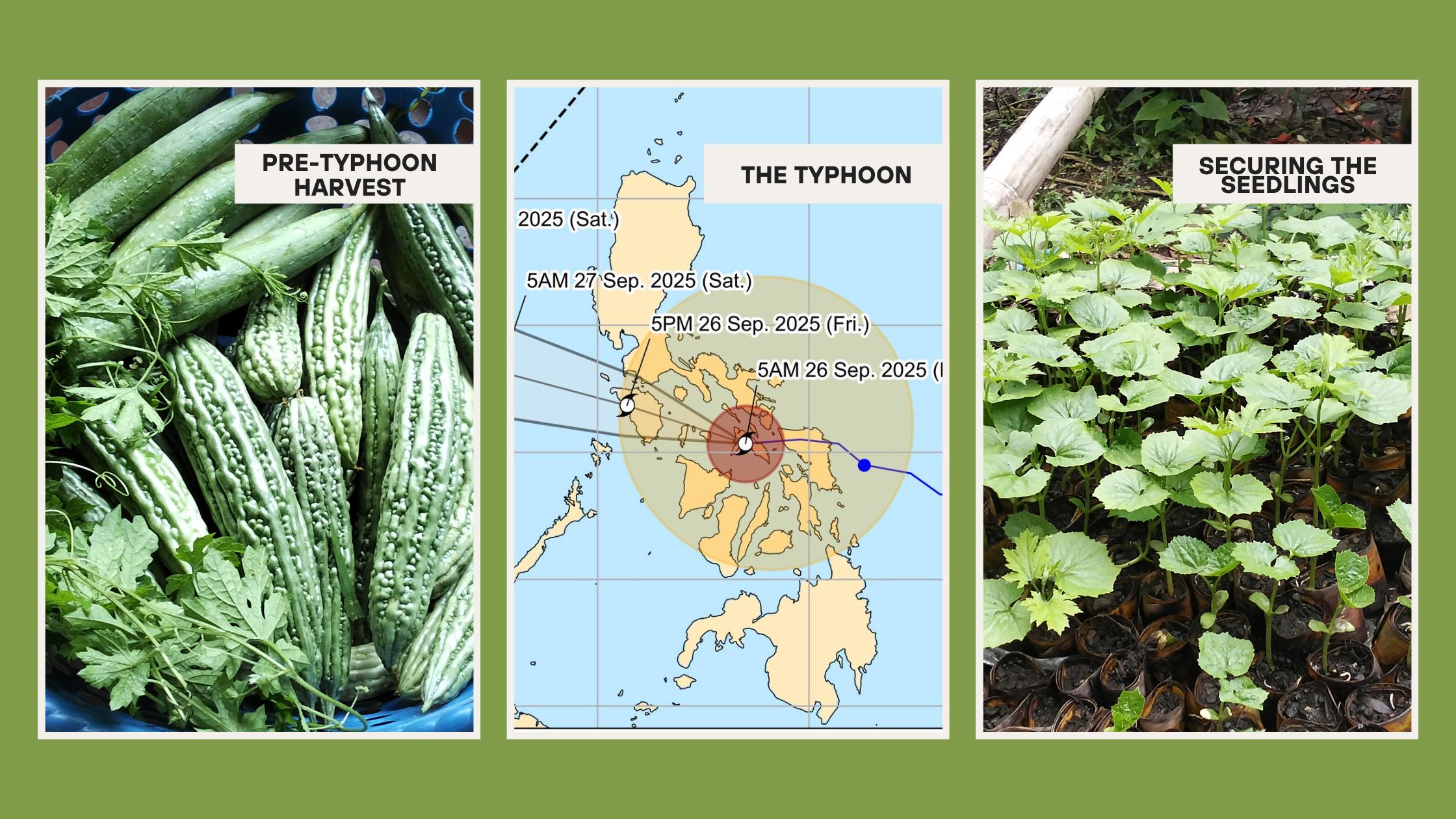
Hello, dear Hive gardeners! My family and I have been a little busy over the past few days, securing our vegetable garden as a storm passed. The Typhoon with the international name ‘Bualoi’ first targeted our region, particularly our province, as the landfall area suddenly shifted track downwards, sparing us from destruction.
We really thanked God for this last-minute turn, especially since some of our vegetables and crops have just been planted, and some are just starting to flower and bear fruit.
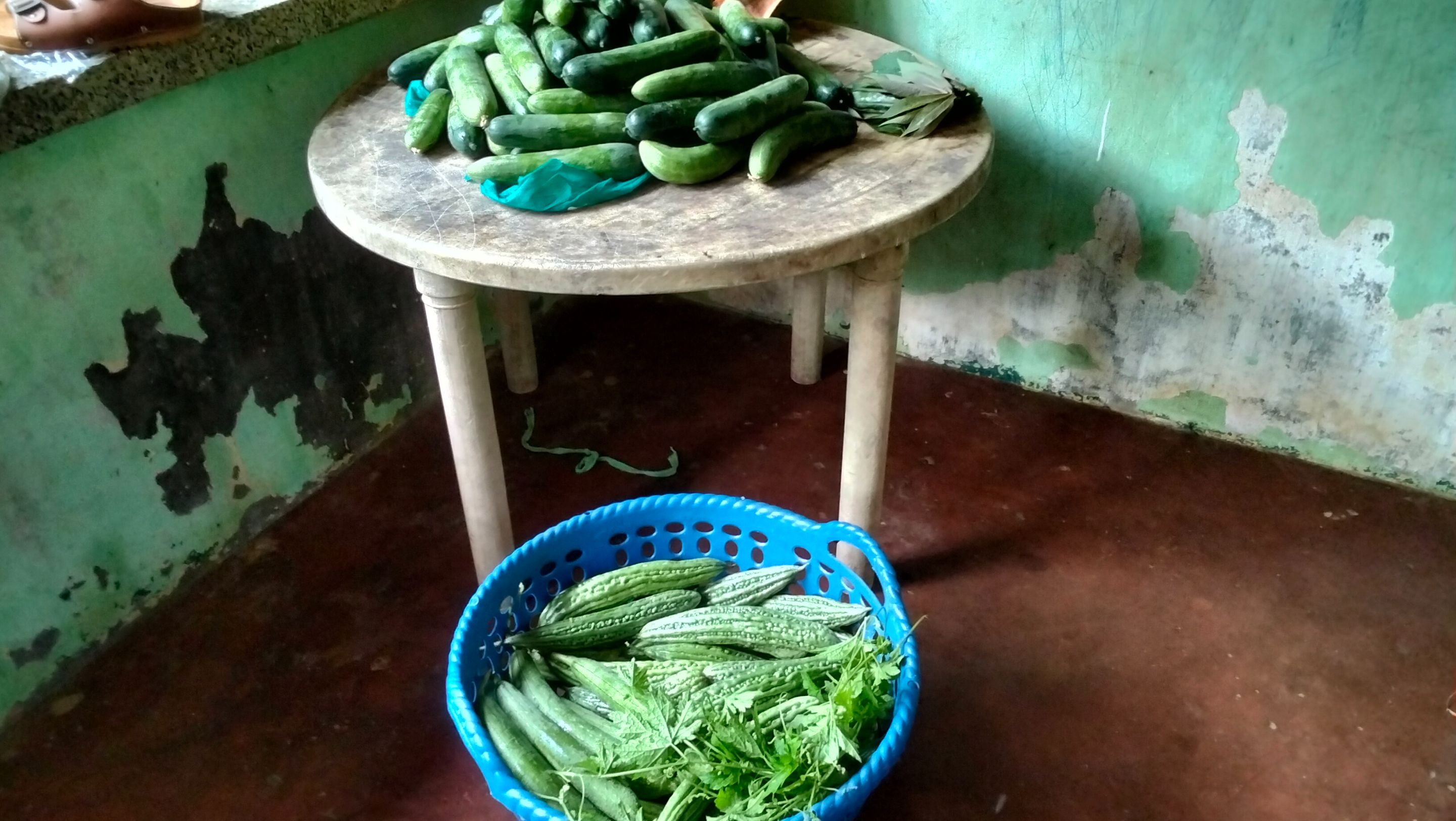 |Our harvest before the typhoon - Bitter gourd, Sponge gourd, cucumber|
|Our harvest before the typhoon - Bitter gourd, Sponge gourd, cucumber|
As part of the preparation, we harvested most of our vegetables yesterday, including the bitter gourds, sponge gourds, and cucumbers. We had a basketful of harvest and sold all of these vegetables to our regular customers.
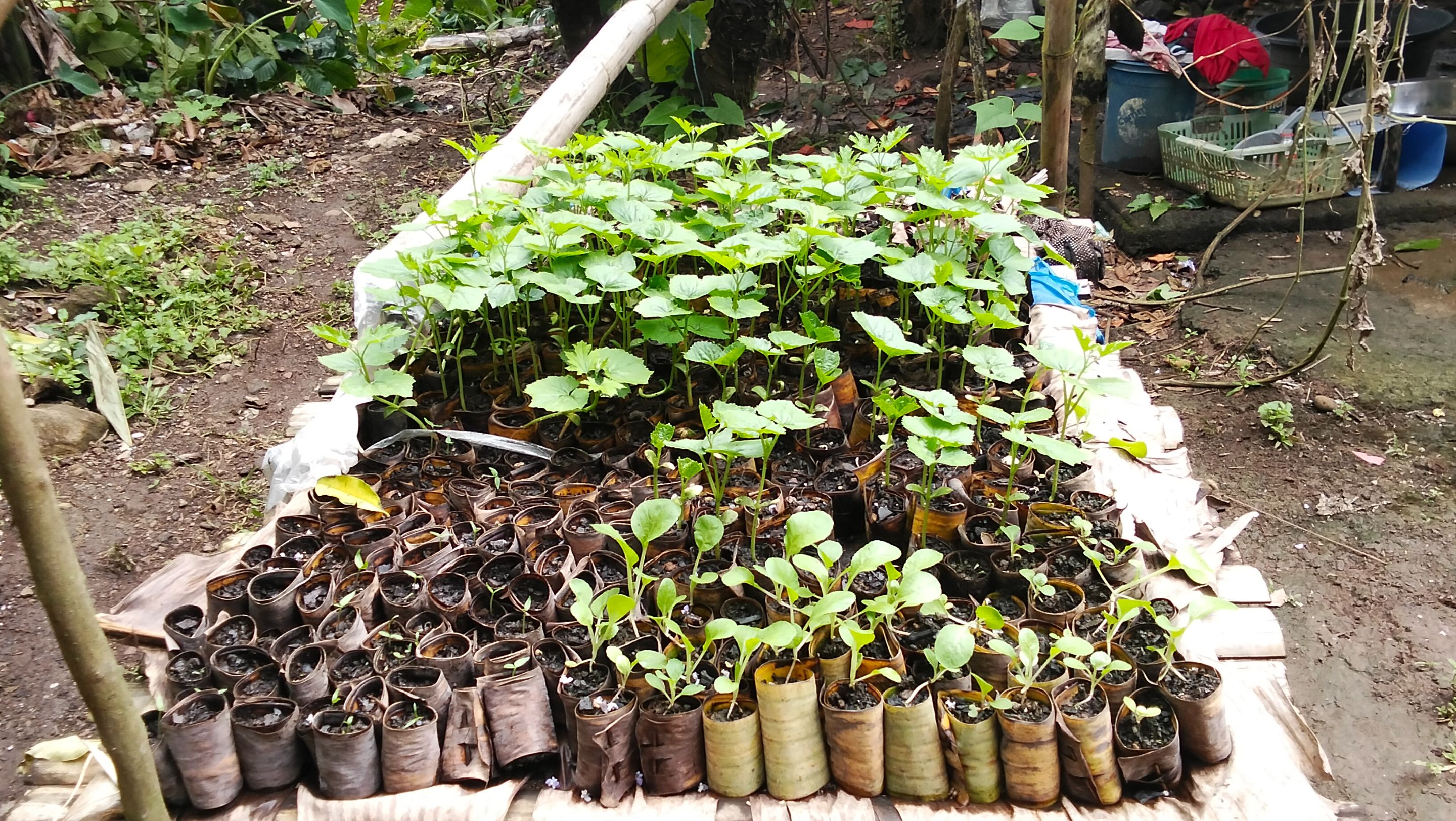 |Our seedling table|
|Our seedling table|
Before the typhoon arrived, we first cleared our seedling table by putting the seedlings under our big table in the dirty kitchen. These were bitter gourds, snow cabbages, sponge gourds, and peppers. We made sure they were safe and secured so we can still plant them after the typhoon.
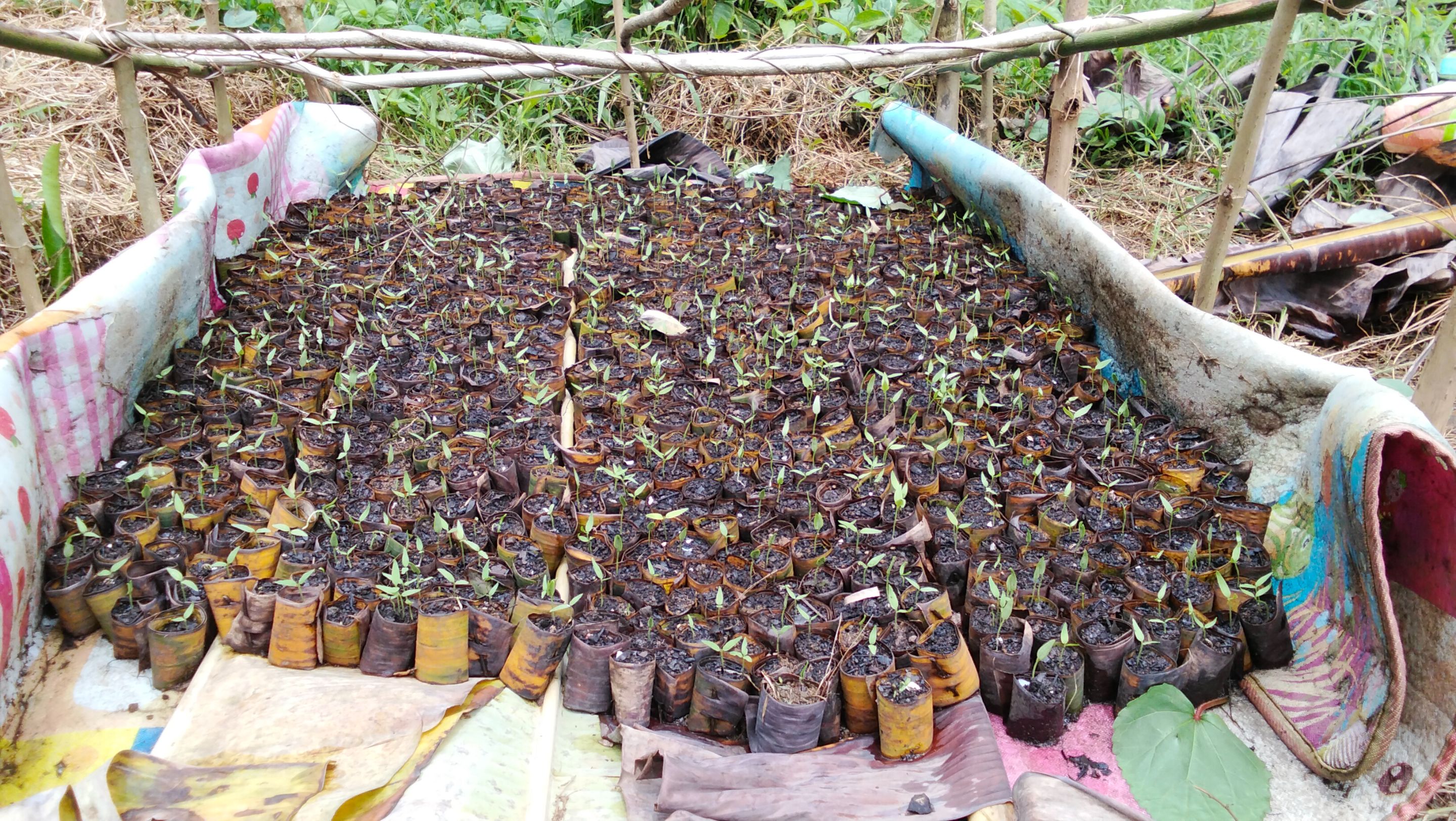 |Chili pepper seedlings|
|Chili pepper seedlings|
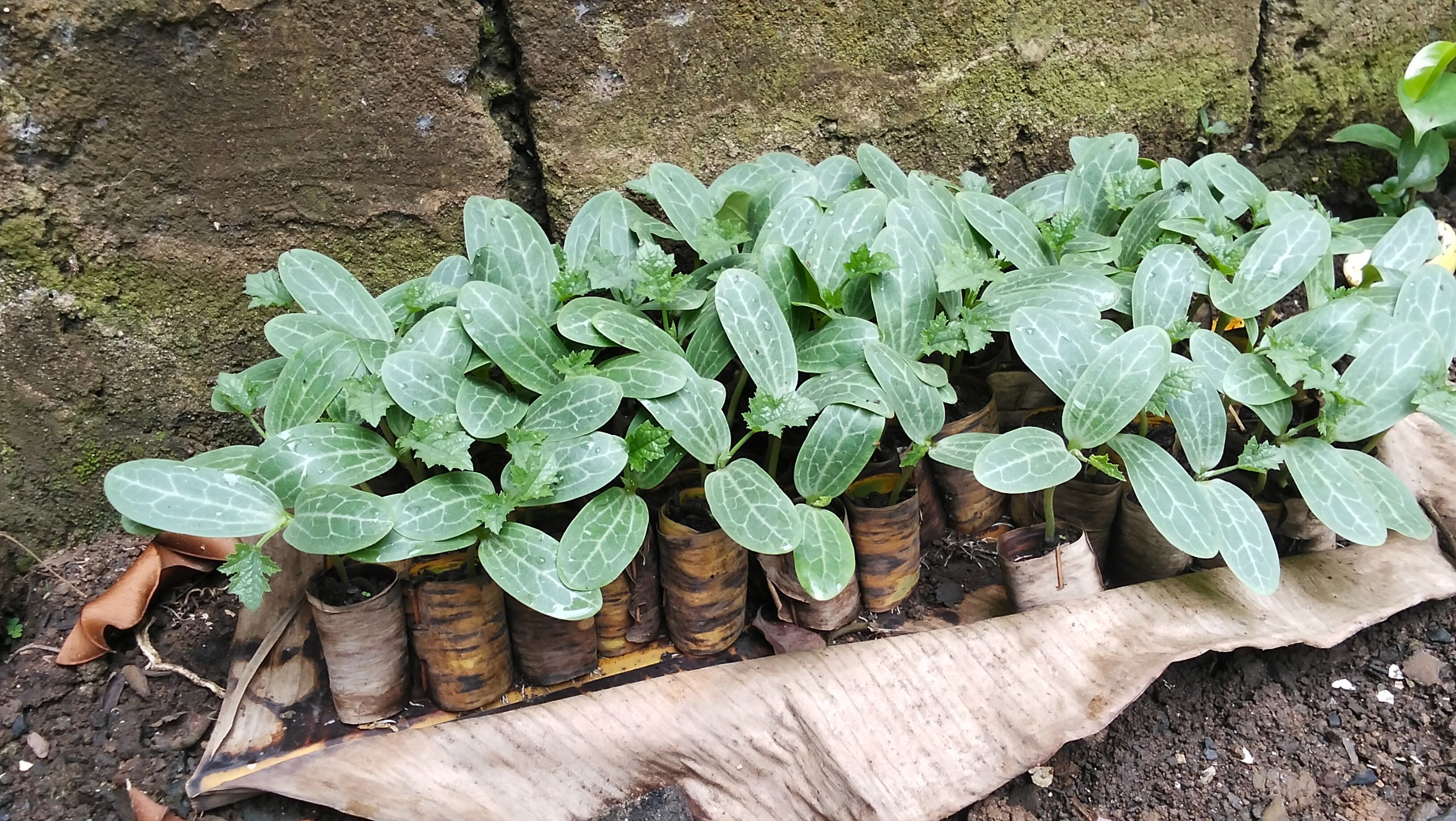 |Sponge gourd seedlings|
|Sponge gourd seedlings|
Today, the typhoon passed, and instead of hitting our province, Sorsogon, it shifted downward, hitting the province beneath us on the map instead. So the result is that we only recorded minor damage in our garden.
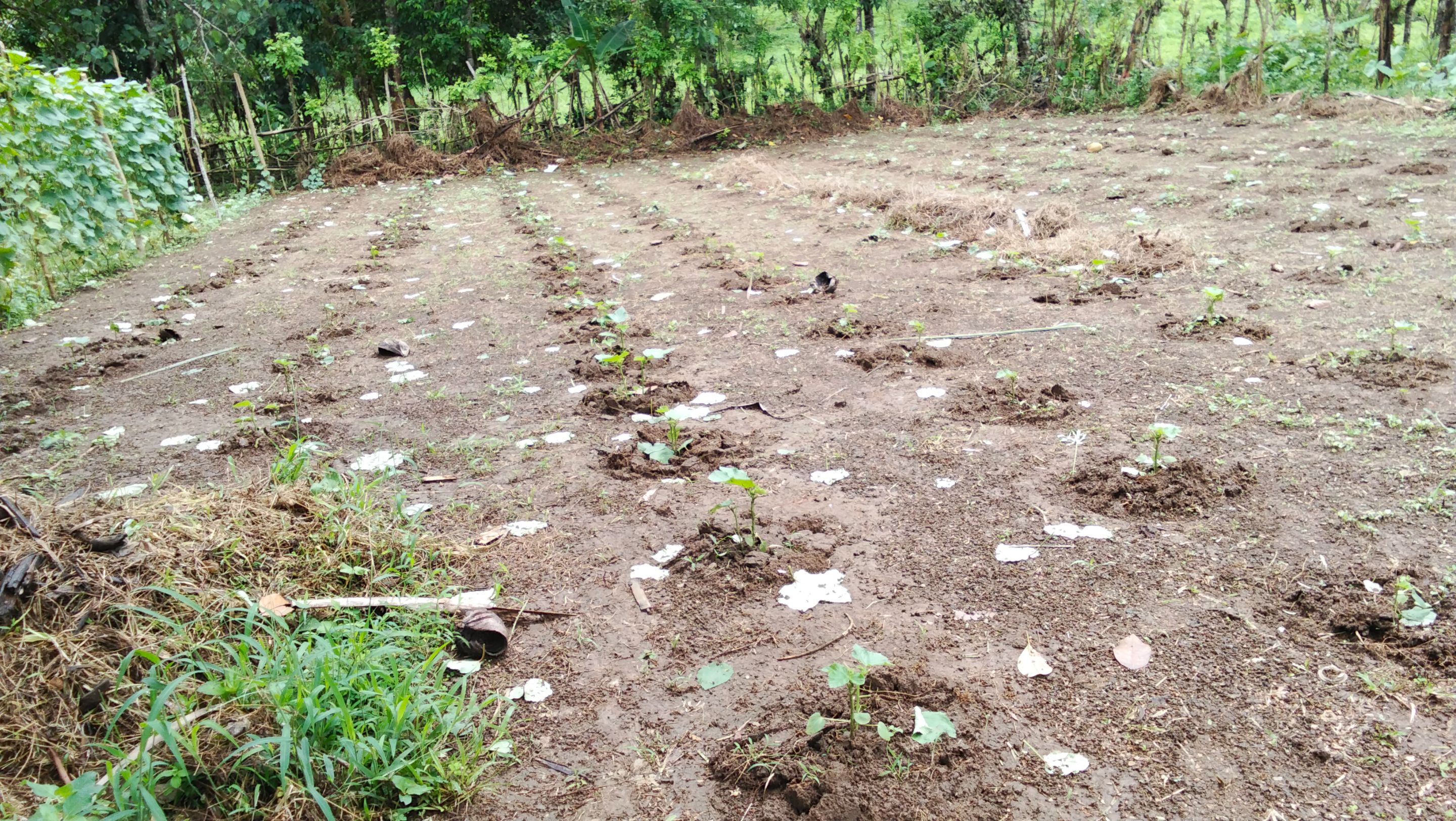 lady's fingers
lady's fingers
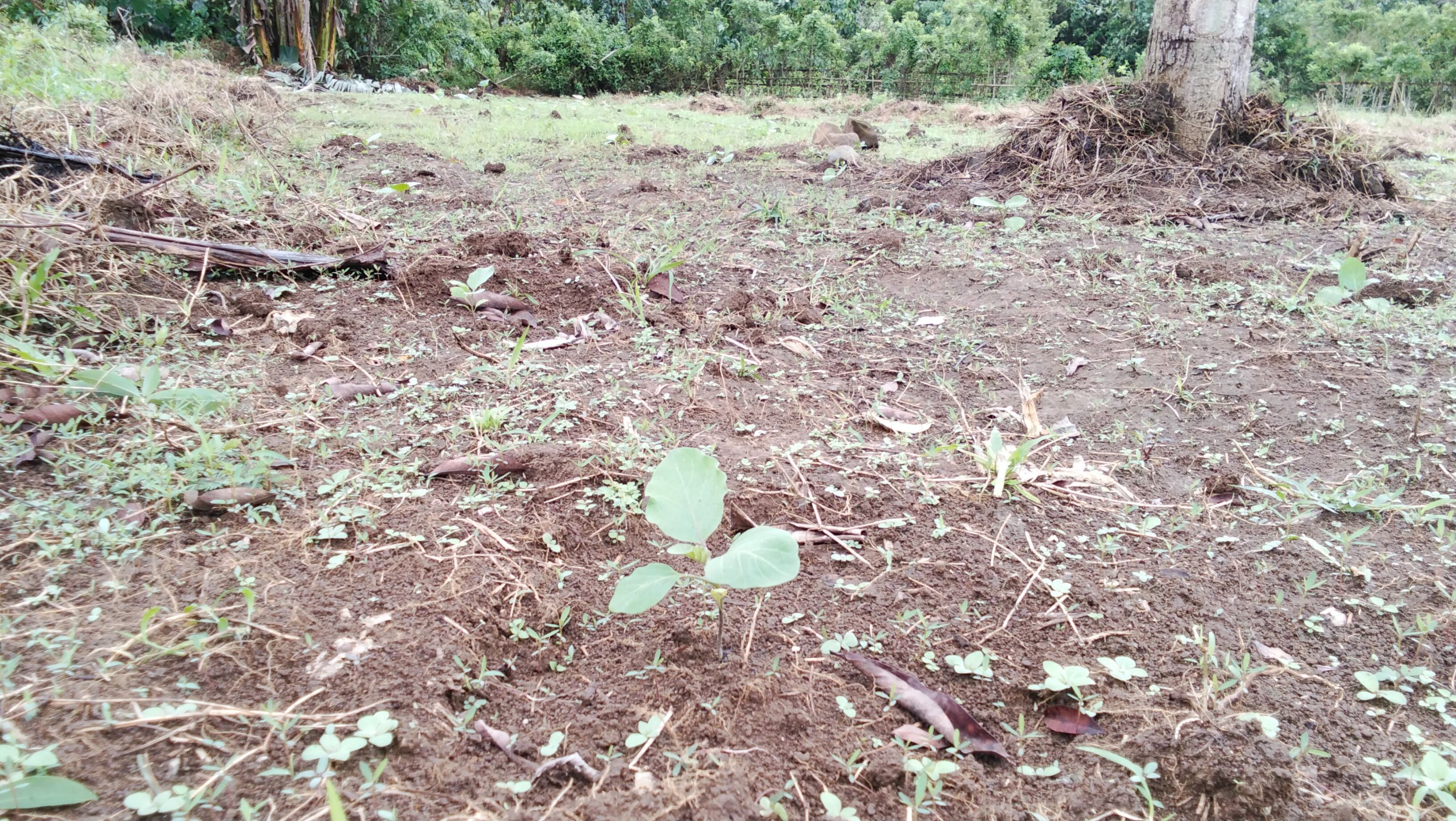 eggplants
eggplants
After the typhoon had passed earlier today, I immediately checked on our vegetables. First, our newly planted eggplants and lady’s fingers. The lady’s fingers were planted last August, while the eggplants were planted last September 13. Yesterday, my sister cut their leaves to mitigate the impact of the wind if ever the typhoon pummels our province. Gladly, it didn’t, and they are staying fine after the storm.
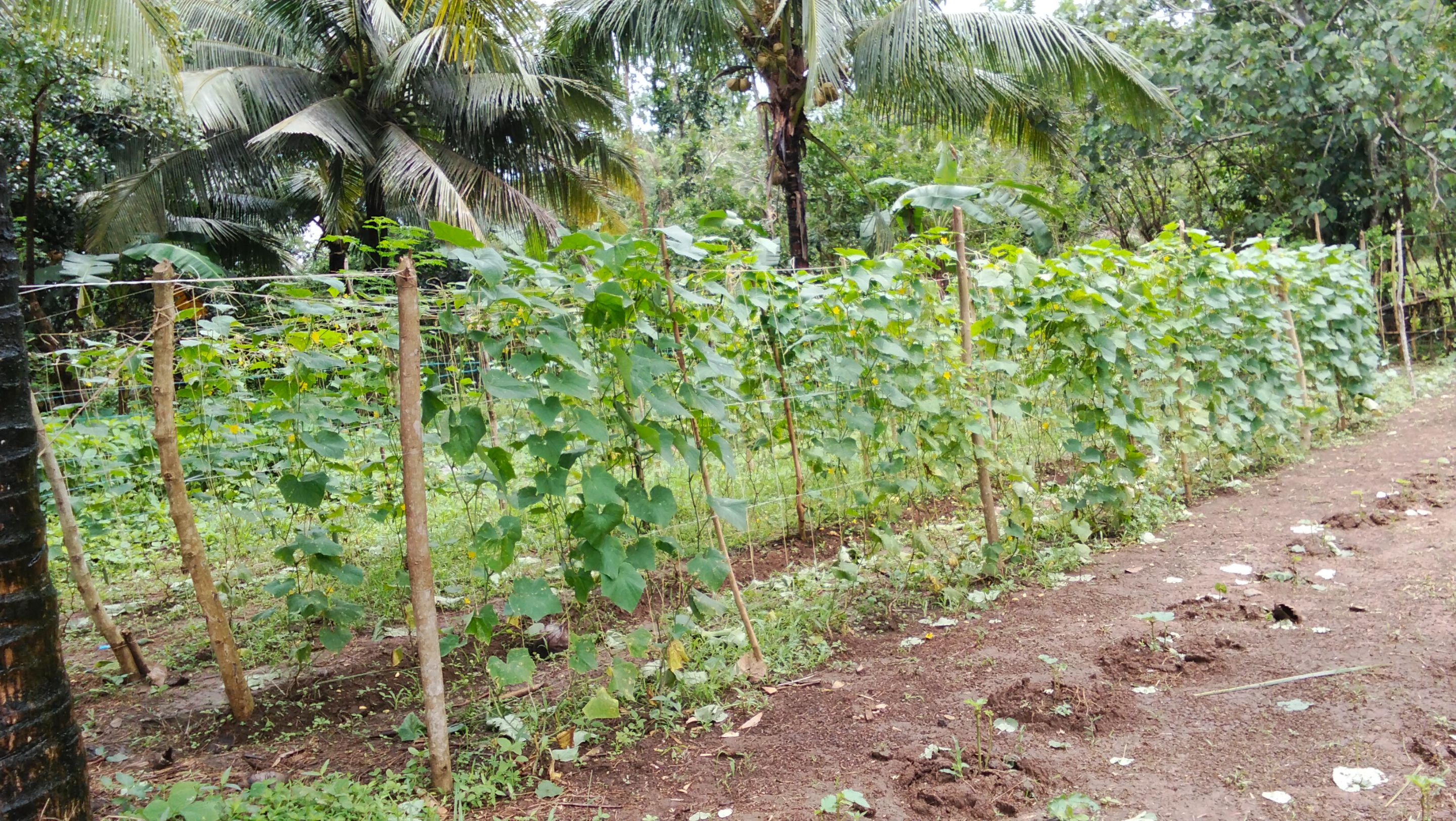 |The cucumbers after the typhoon|
|The cucumbers after the typhoon|
On this side, our cucumbers have just started flowering and bearing fruit since last week, so we even feared for the impact that the typhoon might cause to them. At first, we thought of putting down the trellises, but we backed off, considering that it might cause more damage to them during the process, so we just cut most of their leaves to lessen the impact if ever the typhoon arrives. Luckily, no impacts were recorded at all.
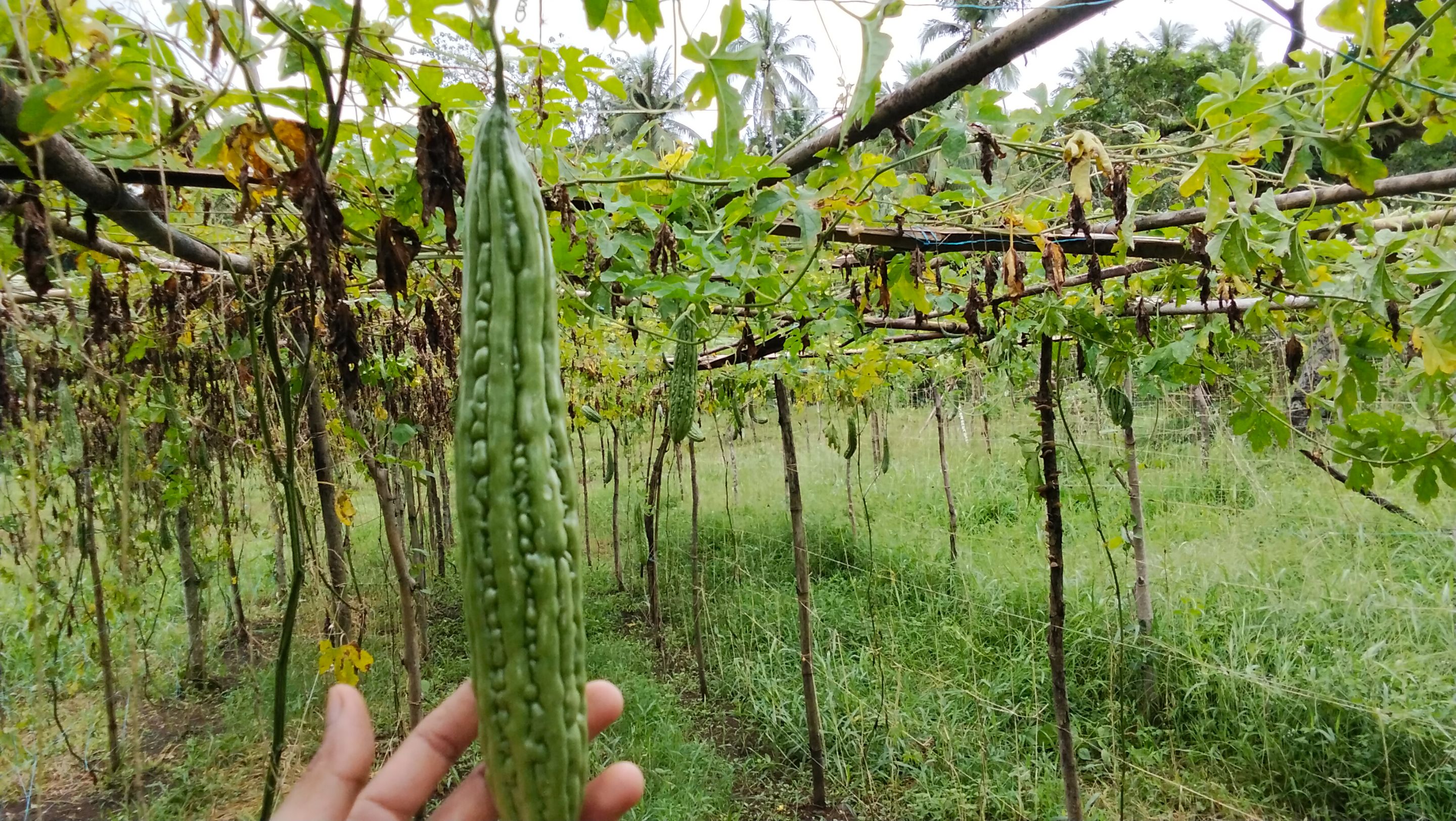
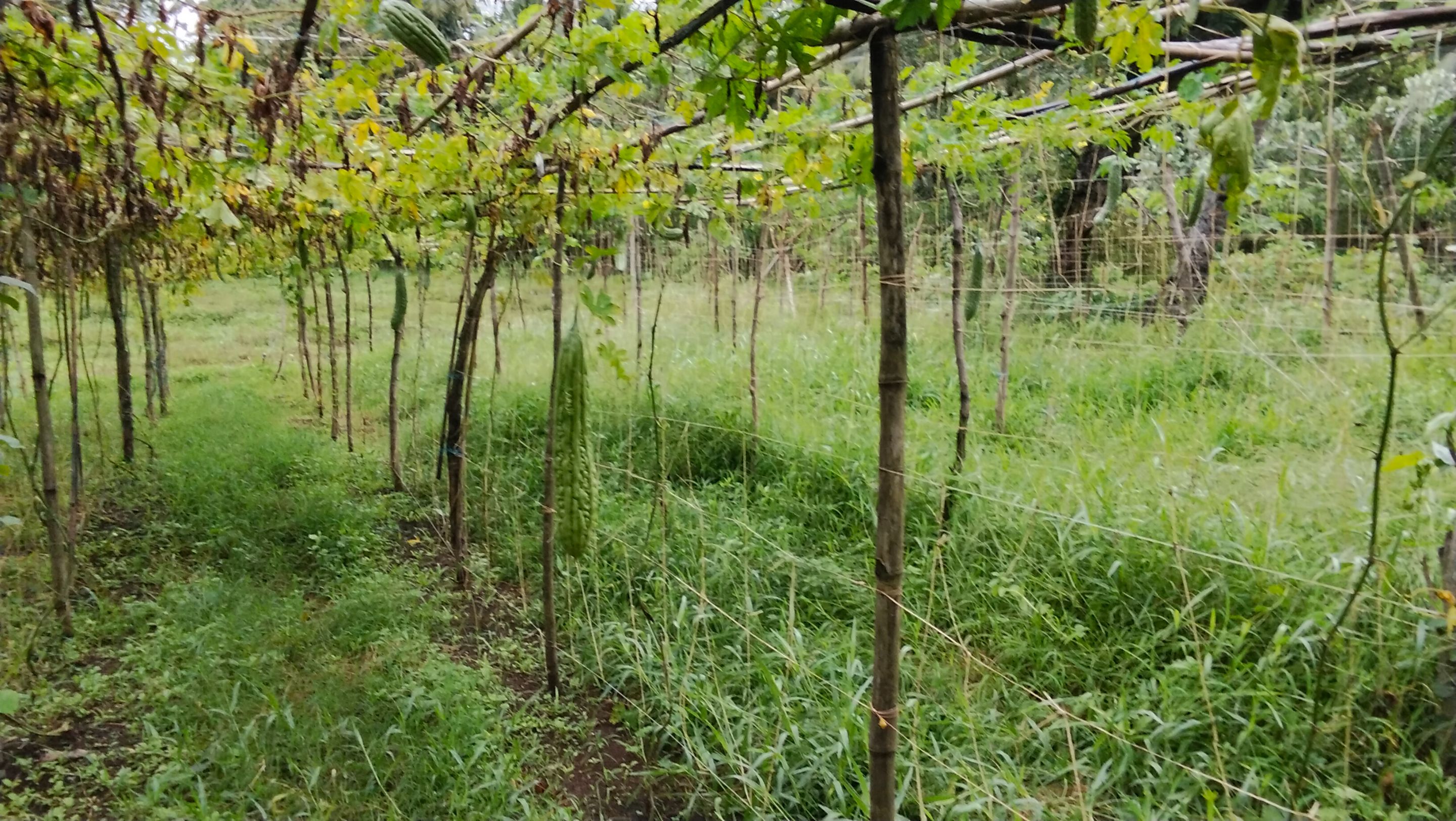
Also, I checked on our ever-yielding bitter gourds on this side of the garden. Thankfully, they are remaining safe and climbing vigorously on the trellises – no damage recorded as well. The wind and rain brought by the typhoon’s onslaught were less and weaker.
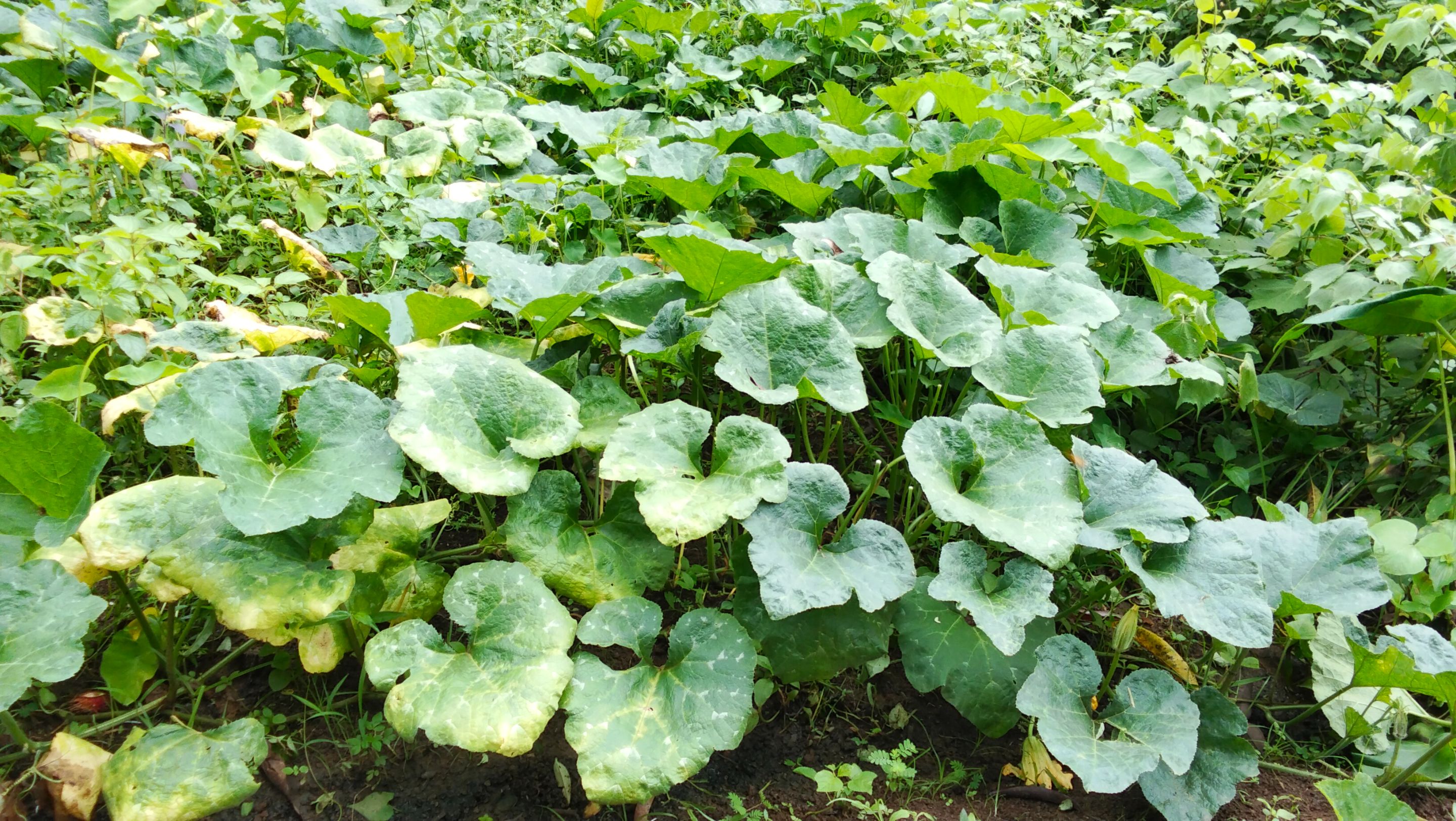 |The unbothered pumpkins|
|The unbothered pumpkins|
On this side, my pumpkins for the pumpkin challenge are staying lush and vibrant. They were not even affected by the rain or the wind since they’re crawling on the ground — the lower the location, the lesser the impact. The weeds around them also served as a protective shield against the wind.
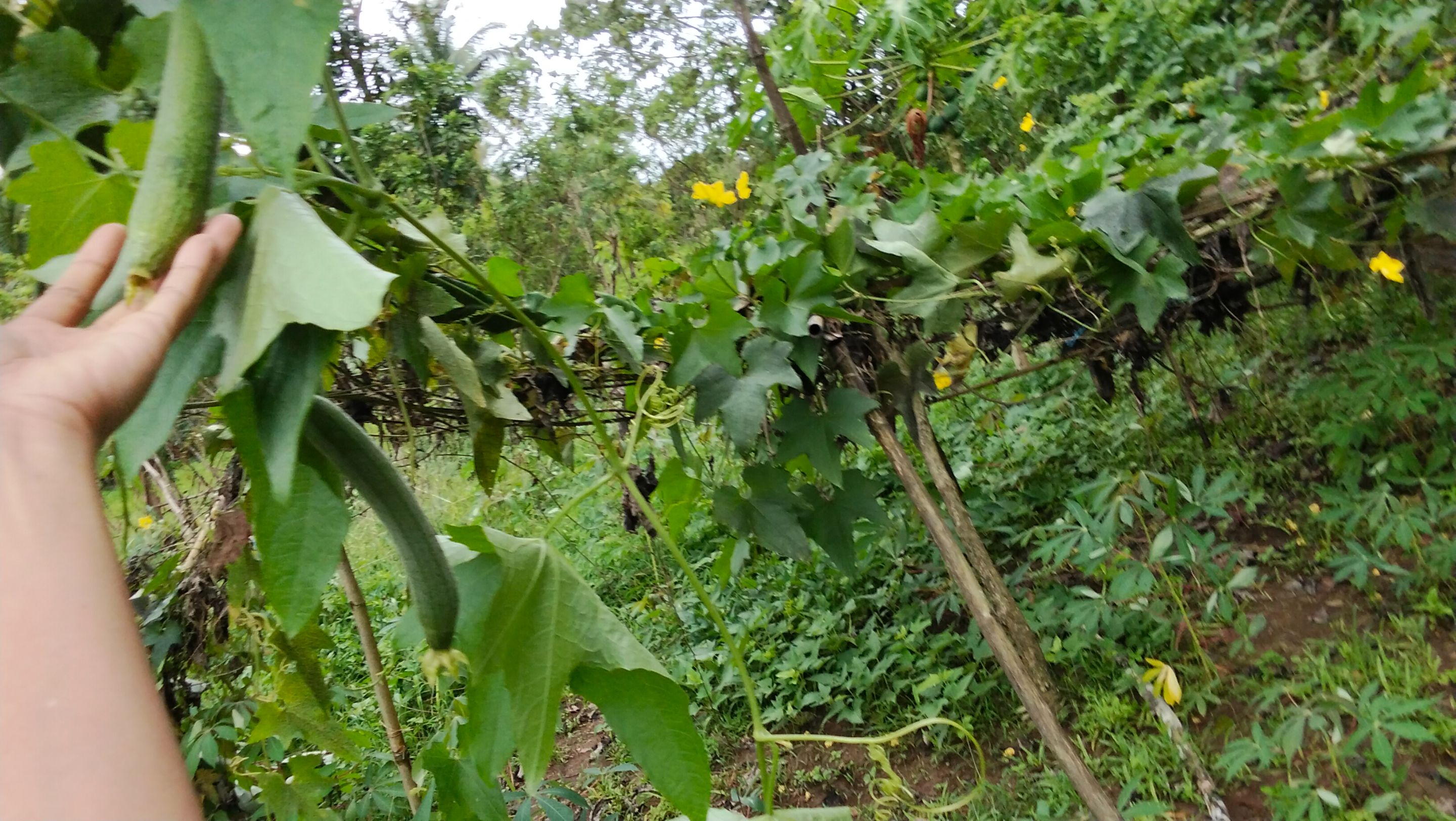 |The damaged Sponge gourds|
|The damaged Sponge gourds|
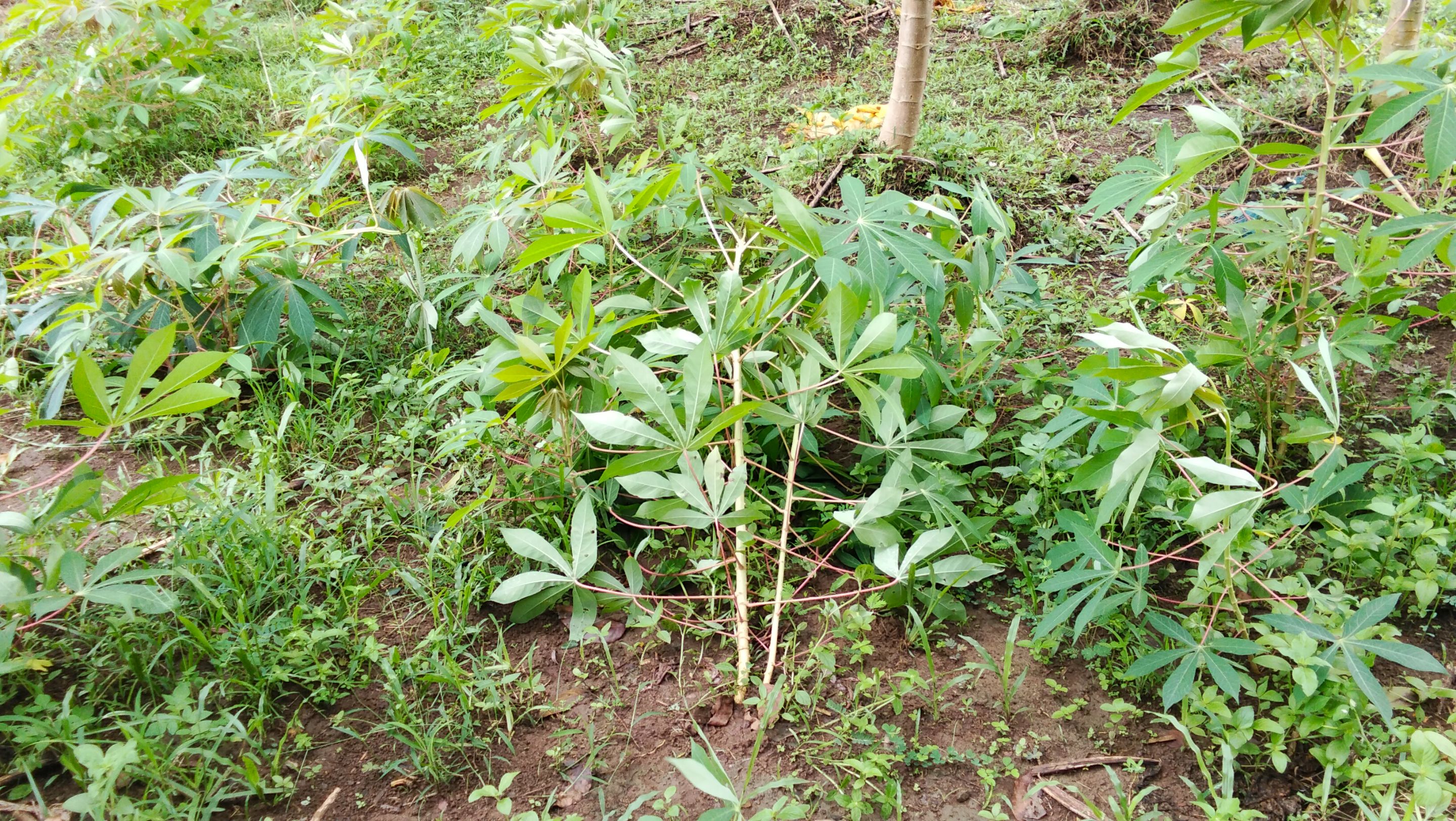 |The damaged cassava plants|
|The damaged cassava plants|
The only impact I’ve seen was a few cassava plants that fell in the wind and some sponge gourd vines that seemed to catch most of the wind as they were hanging. But this impact is lesser compared with what we expect, considering the strength of the typhoon was 110 to 150 kilometers per hour.
|How the typhoon track shifted downwards evading our province|
Just before the said tempest arrived, we were really hopeless about how to save our vegetables, so we just prayed and asked God for a last-minute miracle. Most of the time, when typhoons establish their tracks, the possibility of changing path is less. But this time, it seemed to be a miracle that it shifted downwards, seemingly avoiding our province, and then went back on track after a few hours.
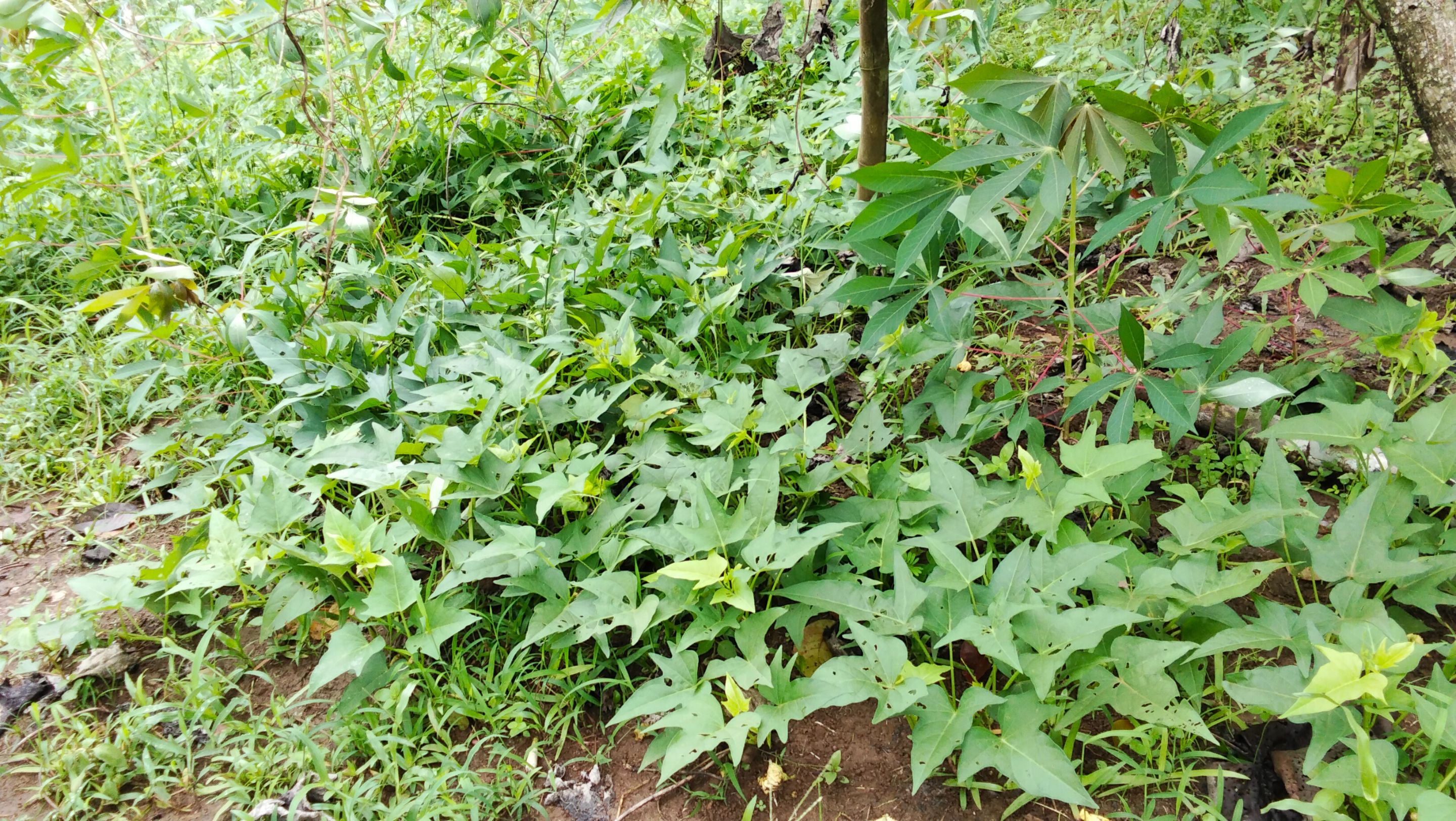 |Our sweet potatoes under the Sponge gourds trellises|
|Our sweet potatoes under the Sponge gourds trellises|
In the Philippines, ‘ber’ months are considered to be typhoon months, so, although we can plant any vegetables year-round, these months are crucial for planting them. Each year, around 20 typhoons visit and pass by our country, and we’re used to it. Planting vegetables is like gambling in these months. What we do is to plant some typhoon-resistant crops as alternatives, such as sweet potatoes, water spinach, taro, moringa, and lemongrass.
Thank you for taking the time to read my garden update after the typhoon. I hope everyone is doing well and gardens are thriving and yielding.
(All photos are mine, the banner photo was edited in Canva. This article was originally written by me.)